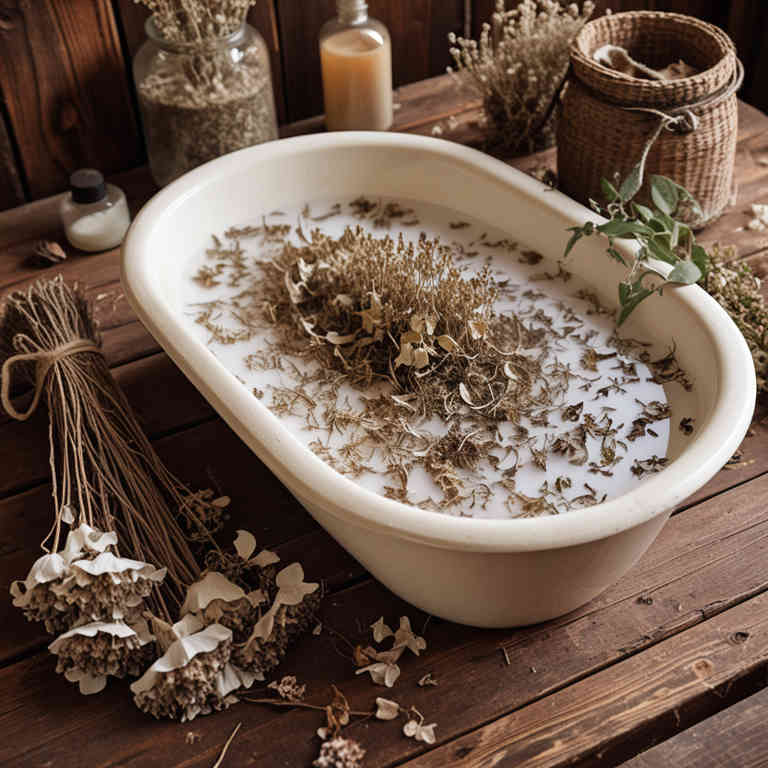Symphytum officinale bath for medicinal use

Symphytum officinale bath is a traditional herbal remedy made by soaking the roots of the comfrey plant in water.
This preparation is used in herbalism to promote healing of wounds, bruises, and bone fractures due to its high concentration of allantoin and other compounds. The bath is typically applied externally to the affected area to soothe inflammation and encourage tissue regeneration. It is often recommended for individuals with slow-healing injuries or those seeking natural support for musculoskeletal recovery.
However, it should be used with caution as prolonged internal use can be toxic.
Uses
Symphytum officinale bath has been used to promote healing and alleviate pain associated with musculoskeletal conditions for centuries.
Historically, it was valued in ancient Roman and medieval European traditions for its purported ability to ease injuries, particularly in the bones and joints. Traditionally, the plant, also known as comfrey, was prepared as a poultice or infused into water for topical application to wounds and sprains. In modern times, while its use is more cautious due to potential toxicity, some still use it in diluted forms for minor skin irritations or as a soothing bath for muscle aches.
Its continued use reflects a blend of traditional knowledge and evolving safety considerations in herbal medicine.
Benefits
Symphytum officinale bath has health benefits such as promoting skin healing, reducing inflammation, and alleviating muscle pain.
This herbal preparation is known for its ability to soothe irritated or inflamed skin conditions. The active compounds in Symphytum officinale may help in the regeneration of tissues and support the body's natural healing processes. It is often used in traditional medicine for its soothing and reparative properties.
Regular use of this bath can contribute to overall skin health and comfort.
Constituents
Symphytum officinale bath active constituents include allantoin, mucilage, alkaloids, and tannins.
These components contribute to the plant's traditional use in promoting skin healing and reducing inflammation. Allantoin is known for its soothing and protective effects on the skin, while mucilage provides a hydrating and emollient action. Alkaloids may have mild analgesic properties, and tannins offer astringent and antiseptic benefits.
This herbal bath is often used to support the treatment of minor skin irritations, wounds, and joint pain.
Preparation
To make Symphytum officinale bath, you will need dried Symphytum officinale leaves or roots, water, and a clean bathtub.
Start by boiling 1 to 2 cups of dried Symphytum officinale in 4 liters of water for about 15 minutes. Strain the liquid and allow it to cool to a comfortable temperature before adding it to the bathtub. Fill the tub with enough water to cover the body, and soak for 15 to 30 minutes.
This bath is traditionally used to soothe muscle pain, reduce inflammation, and promote skin healing.
Side Effects
Symphytum officinale bath may lead to skin irritation or allergic reactions in some individuals due to the presence of pyrrolizidine alkaloids, which can be toxic to the liver.
This herbal preparation is traditionally used to soothe muscle pain, reduce inflammation, and promote skin healing. However, prolonged or excessive use may increase the risk of liver damage, especially in individuals with pre-existing liver conditions. It is important to consult a healthcare professional before using this bath, particularly for those with sensitive skin or chronic health issues.
The potential side effects highlight the need for caution and proper guidance when incorporating Symphytum officinale into a wellness routine.